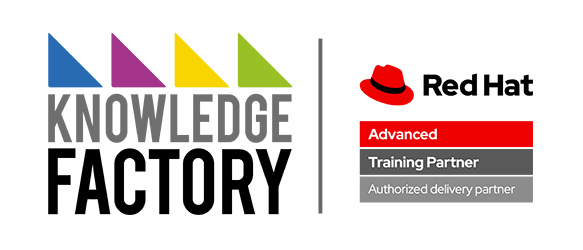Course description
Configure and manage OpenShift clusters to maintain security and reliability across multiple applications and development teams.
Red Hat OpenShift Administration II: Operating a Production Kubernetes Cluster (DO280) prepares OpenShift Cluster Administrators to perform daily administration tasks on clusters that host applications provided by internal teams and external vendors, enable self-service for cluster users with different roles, and deploy applications that require special permissions such as such as CI/CD tooling, performance monitoring, and security scanners. This course focuses on configuring multi-tenancy and security features of OpenShift as well as managing OpenShift add-ons based on operators.
The skills you learn in this course can be applied using all versions of OpenShift, including Red Hat OpenShift on AWS (ROSA), Azure Red Hat OpenShift, and OpenShift Container Platform.
This course is based on OpenShift Container Platform 4.14.
Following course completion, you will receive a 45-day extended access to hands-on labs for any course that includes a virtual environment.Note: This course is offered as a five day virtual class or self-paced. Durations may vary based on the delivery. For full course details, scheduling, and pricing, select your location then “get started” on the right hand menu.
Course Topics
- Deploying packaged applications using manifests, templates, kustomize, and helm.
- Configuring authentication and authorization for users and applications.
- Protecting network traffic with network policies and exposing applications with proper network access.
- Deploying and managing applications using resources manifests.
- Enabling developer self-service of application projects.
- Managing OpenShift cluster updates and Kubernetes operator updates.
Target Audience
- Platform Administrators, System Administrators, Cloud Administrators, and other infrastructure-related IT roles who are responsible for managing and maintaining infrastructure for applications
- Enterprise Architects, Site Reliability Engineers, DevOps Engineers, and other application-related IT roles who are responsible for designing infrastructure for applications
Recommended Training
- Take our free assessment to gauge whether this offering is the best fit for your skills.
- Prerequisite: Red Hat OpenShift Administration I: Operating a Production Cluster (DO180v4.14), or equivalent skills deploying and managing Kubernetes applications using the OpenShift web console and command-line interfaces.
- Significant experience with Linux System Administration is not needed for this course. Basic skills operating a Bash shell, manipulating files and processes, and verifying system confirmations such as network addresses are necessary and sufficient. Students are encouraged to take Getting Started with Linux Fundamentals (RH104) before enrolling in DO280
Technology considerations
- This course requires internet access to access the cloud-based classroom environment that provides an OpenShift cluster and a remote administrator’s workstation.
